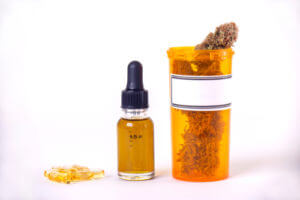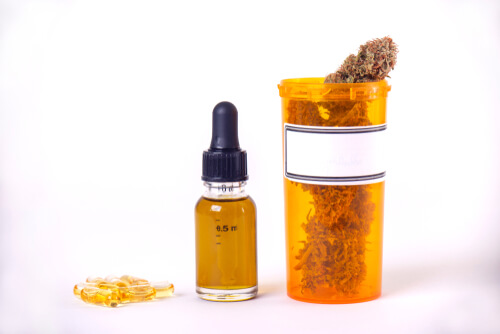
The usage of cannabidiol (CBD) health and wellness products by consumers for treating various ailments is becoming more prevalent since the US Farm Act of 2018. This legalized the cultivation of hemp plants and the use of their derivatives for medical and research purposes. Moreover, due to the demand for CBD products for their therapeutic benefits, along with the federal level legalization of hemp cultivation, it is a good time for US farmers to grow hemp. The purpose of this article is to shed light on the topic of hemp cultivation, read on to know more.
The Different Varieties Of Hemp
The US Farm Act of 2018 legalized the cultivation of hemp plant strains that has less than 0.3% of THC so that CBD health and wellness products made using it will not produce any psychotropic effects. Shared below are the different varieties of hemp plants that are cultivated for different purposes.
- CBD Rich Hemp: The flowers and leaves of this strain of hemp plant have high concentrations of cannabidiolic acid (CBDA) which is the raw form of cannabidiol (CBD). When the hemp plant parts or the extract is heated slowly i.e. decarboxylated, CBDA is converted into CBD which is easily available to the endocannabinoid system (ECS) of our body.
- Grain Rich Hemp: Grain rich variety of hemp plants produce large quantities of nutritious hemp seeds and they are categorized as superfoods, but their CBD or CBDA concentration is low.
- High Fiber Hemp: This variety of the hemp plant is taller than the previous two types and its stalks are used for making the highly durable hemp cloth or fiber.
Conditions For Growing Natural Hemp Plant
Temperature: The ideal temperature for the germination of hemp seeds is 65 to 70oF and it is generally recommended to avoid temperatures lower than that. So, when cultivating hemp plants, the seed should be planted in the soil at depth with a temperature of 50oF.
Soil: The hemp seed is planted in the soil at a depth of 0.75 to 1 inch, and the soil must be well aerated, loose, drained, and with a pH between 6.0 to 7.0. Also, keep in mind that if the pH is above 7.5, i.e. alkaline, or if it is below 5.5, i.e. acidic, it can cause nutrient deficiency.
Humidity: Hemp plant cultivation requires semi-humid conditions with a temperature that varies between 60 to 80oF. Also, the plant does not respond very well to excessive watering but requires ample moisture in its early stages of growth, and the ideal amount of rainfall in its life cycle is 10 to 14 inches. However, excess rainfall results in stunted growth and reduced yields. So, to maintain an optimal level of humidity for better yield, irrigation might be necessary depending on the geographic location.
Germination Of Natural Hemp Plant
Even though hemp seeds germinate best in firm bed, it is sensitive to soil compaction and crusting and requires adequate levels of soil moisture for germination. Moreover, cracked or dull-looking seeds have a hard time germinating, and sometimes they don’t germinate. So, a method to encourage germination is to soak hemp plant seeds in distilled water at 65 to 70oF overnight, i.e. 8 to 12 hours. The soaked seeds are then transferred to a seedling tray or pot.
Nutrient Requirements Of Natural Hemp Plant
For cannabidiol (CBD) rich variant hemp plant, the nutrient requirements vary according to their stage of the lifecycle. For example, in the vegetative stage nitrogen, phosphorous, and potassium or NPK ratio of 3:1:2 is recommended, while the NPK ratio is 1:3:4 and then tapered to 0:3:4 in the flowering stage. Compost and manure are good organic fertilizers that are rich in the nutrients mentioned above.
The Lifecycle Of Natural Hemp Plant
The hemp plant is an annual plant whose lifespan is around 120 days, 30 to 60 days of vegetative growth and approximately 60 days for flowering. However, there will be slight variations in these numbers depending on the hemp plant strain and the growing conditions.
Uses Of Natural Hemp Plant
The hemp plant is not a native of the Americas but is indigenous to central and east Asia. It was mainly grown in China, Japan, Russia, and other Asian countries for its fibers and applications in traditional medical practices. However, in the modern age, it is mainly grown in the countries already mentioned, as well as Italy, Czech Republic, Poland, Netherlands, France, Hungary, Germany, Slovenia, Canada, and others for the durable fiber.
The flowers of the Cannabidiol (CBD) rich hemp plant are used for making various types of CBD health and wellness products. One of the most popular items is CBD oil and it is used for treating a wide variety of ailments. Apart from this, it is the main ingredient used for making other CBD products like edibles, vape oil, pills, capsules, topical products, etc.
We hope that this article clarified your doubts about the natural hemp plant.

